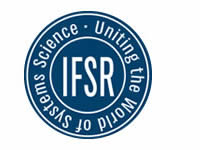IFSR Newsletter 1983 Vol. 3 No. 2 Autumn
A Conference Report by Prof. G. de Zeeuw
Systeemgroep Nederland organizes – in addition to regular summer schools, seminars and other events – a Research Conference in alternate years. Themes for this conference are selected and developed in all their aspects (see IFSR Newsletter Autumn 1982) by the organizer Prof. Gerard de Zeeuw, who below reviews and examines the key issues of the theme of the 1983 meeting.
As the third of a biennial series of meetings, the conference on Problems of Actors and Actions took place in Amsterdam. Previous meetings dealt with Problems of Context (1979), and Problems of Levels and Boundaries (1981). The meetings are sponsored by the Systeemgroep Nederland (Dutch Systemgroup), and the University of Amsterdam. The present meeting was organized by Gerard de Zeeuw and Annetta Pedretti.
Some people enjoy returning, and so become good friends. This time there were also quite a few new faces. About 60 people participated from some 9 countries. As usual many possibilities were offered and enjoyed for discussion and interaction, one of them the by now famous conference dinner. A new feature for interaction was introduced by Annetta Pedretti. Paricipants could write letters to each other, which were made into a conference book – available on the last day of the meeting. Quite a bit of effort went into this activity, but it was greatly appreciated.
There seem to be at present two major types of metaphor, on the basis of which scientific inquiry can be ordered fruitfully (and which of course also may be ordering more mundane processes). The one is the well-known optical metaphor, leading to the quest for theories, in relation to observations; to insight into the processes of nature, as seen by man; to observer-unbiased statements about events in the world – all as best as possible. The other is the (equally well-known) actor metaphor leading to the quest for plans, designs, supports, stimulating stories – in relation to the constraints of empirical reality; to justified action, reordering the interactive process of nature and man, as created by man; to explicitly actor-addressed statements on what to do, in cooperation with other actors – again all as best as possible.
The two types of inquiry, stemming from these two metaphors, are not mutually exclusive. They can be combined, or alternated, or used to study one another. One may wish for example, in terms of the latter, to observe as a researcher the actions of a group of actors, to represent in theoretical form the inner structure of the processes of interaction, etc. Here one uses the optical type of inquiry to find out about actors. Or conversely, one may try to make explicit (as a researcher) what one should see in terms of some activity of (other) actors – so as eventually some actors, when addressed, may improve their version of that activity by better local observation. In this case, following the actor type of inquiry, a researcher may concentrate on the observation process of some actors. Thus one may have four combinations, derived from the two metaphors. Again: this does not limit the possibilities for inquiry of both types, apart or combined.
In the meeting the various aspects of actors and actions were explored, both via the optical type of inquiry, and the actor type of inquiry. I just mention a few examples.
One may try to find improved supports for activities of actors like people or companies. One possibility is to increase interaction, so people’s experience starts to be used more as resources (Mulej, Eckhart, Boyd). Another is to implement computer systems, to serve as quality
amplificators of people’s activities (Gergely, Futo) especially of their collective problem solving. Or to design such systems in a more general form (De Hoog, Vischer, Jones, Hough).
One may also explore the methodological implications of the actor type of inquiry: what if one mistakenly uses the procedures of the optical type, when those of the actor type are intended? How to recognize such mistakes, or use them to construct adequate procedures (De Zeeuw)? Or one may try to make such mistakes explicit in specific contexts, like economic systems (Guillet de Monthoux), in social helping (Polet), in intentional behavior (Ozinga), in bureaucratized inquiry (Van Geen), in psychotherapy (Soudijn), in planning (Van Lohuizen), in law (Decleris), in clinics (Van der Doef). A third series of questions stems from a comparison of optical and actor types of inquiry. What do actors see (Braten); what are the main concepts in both and how are these related (Pedretti), e.g. in language (Colombetti), or theoretically (Jung); how did they develop historically (Van Hoorn)? The above examples do not exhaust what was discussed, but may provide some idea of the complexity and variety of the contributions. There are indeed formidable problems with actors and actions – both conceptually as well as in the flesh!
The discussions were very useful to have crystallize some of the main points of attention. Let me mention a few. Actions may deteriorate over time, and hence need supports – which again are actions. The quality of actions of some actors will also depend on the quality of other actors, not only on what they are doing themselves. Actions can produce complexity; inquiry need not
only support reduction of complexity (Lofgren). Understanding of actions should not exclude the possibility of creating new actions. Positions as actors are not reducible to each other. To improve actions therefore, in research one will need the possibility of relating to many positions at the same time – at least those of the inside and the outside of every action. Discussions such as proceeded in the conference seem helpful, at least to become more explicit about what can be done to attack our many pressing social problems – as indeed these seem to derive mainly from interactions between actors.
Gerard de Zeeuw
Note: Inquiries about proceedings should be addressed to Annetta Pedretti, Postbox 780, CH-8025, ZOrich, Switzerland
